Friday Mar. 3, 2006
Optional Assignment #3 was collected in class today.
Distribution of the materials needed for Experiment
#3 began today. A few kits will also be available next Monday.
A couple
of energy balance/greenhouse effect concepts to finish before starting
the last section in Chapter 2.
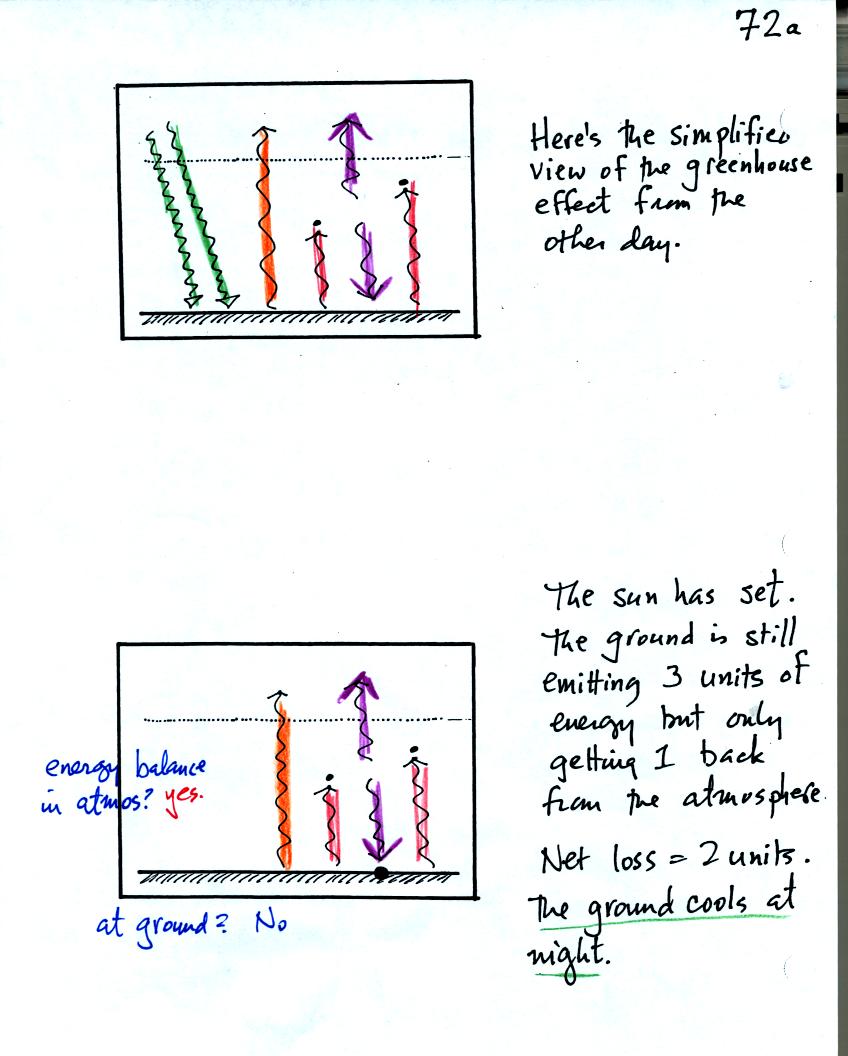
In the bottom figure the incoming sunlight has been removed
from the
energy balance diagram. The ground is emitting 3 units of energy
and getting 1 back from the atmosphere. That is a net loss of 2
units. The ground will cool fairly rapidly during the night.
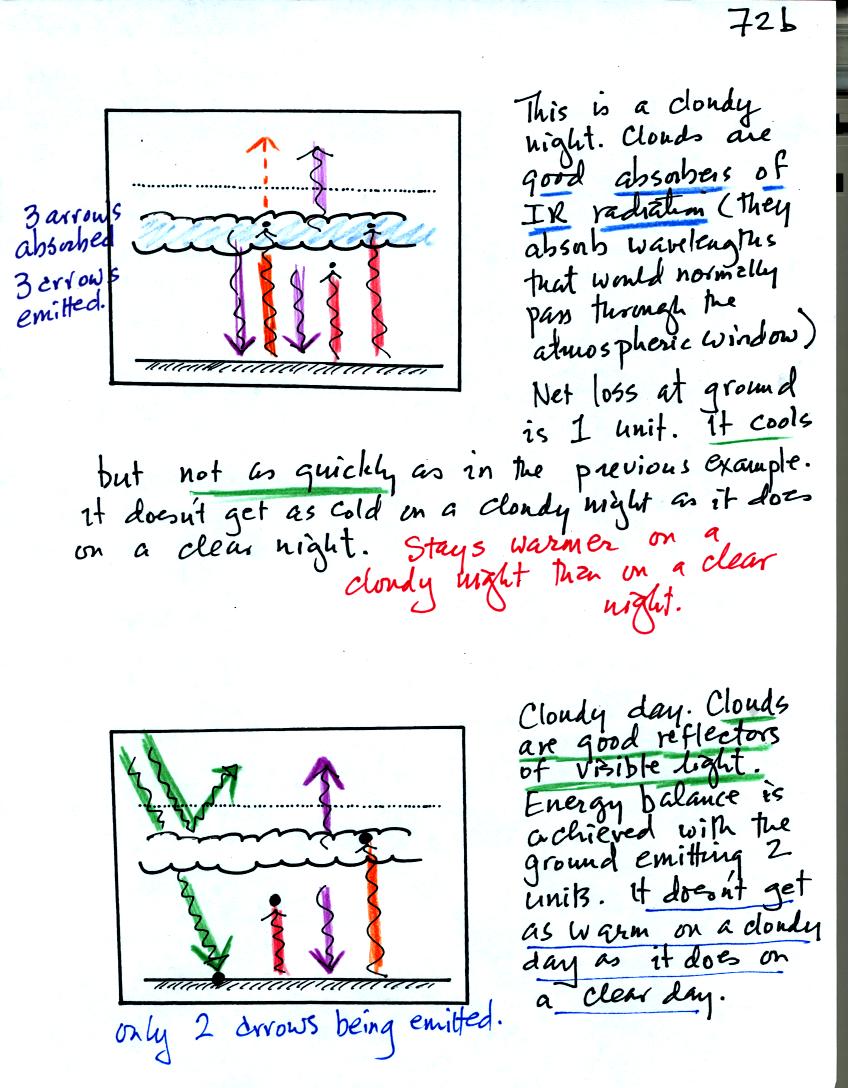
In the top figure it is still night but a layer of clouds
has been added. The clouds
are good absorbers of IR radiation even at wavelengths that would
otherwise pass through the atmosphere. Clouds reduce the net loss
of energy at the ground. The ground cools
more slowly and doesn't get as cold during the night.
The bottom figure above is a daytime figure (the sunlight is
back). The clouds will reflect some of the incoming sunlight and
reduce the daytime high temperatures.
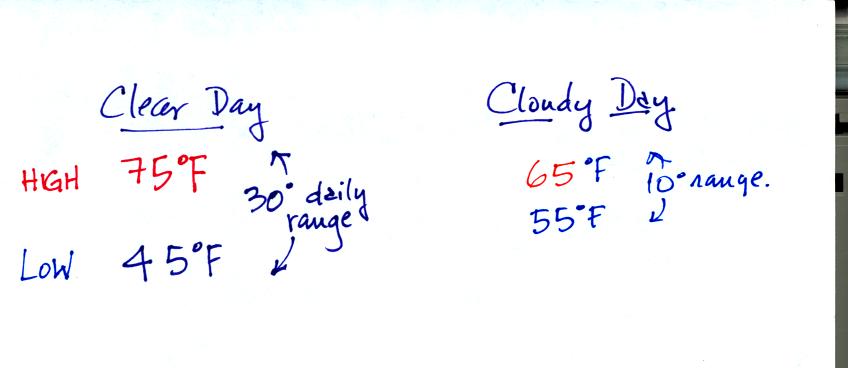
Typical daytime highs and nighttime lows in Tucson for late
February. Note how the clouds reduce the daily range of
temperature.
We took a
detour at this point and learned a little bit about Experiment
#3.
In Experiment #3 a piece of aluminum, painted black, is pointed at the
sun. A thermometer is inserted into the side of the block.
You measure how quickly the block heats up. The dowel is used to
properly orient the apparatus; the dowel won't cast much shadow when
the block is pointed straight at the sun.
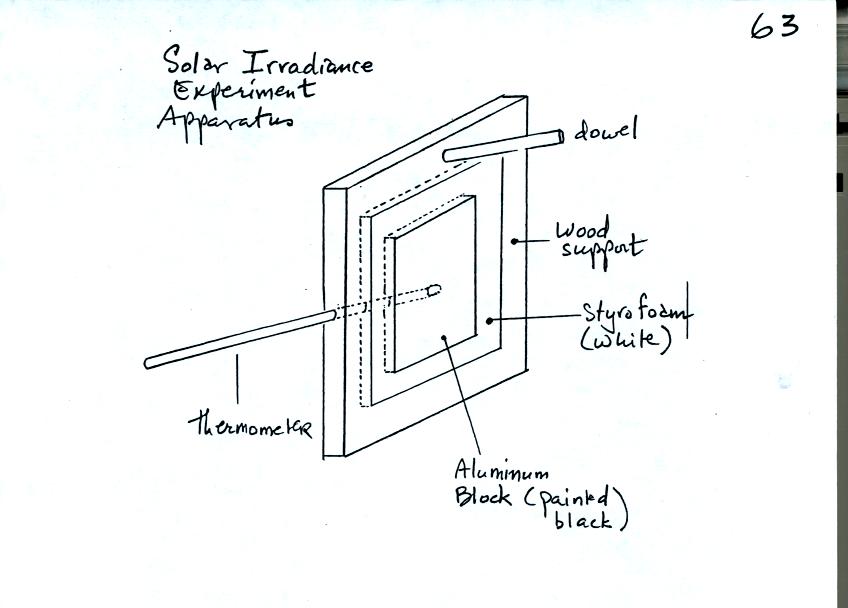
The object of Expt. #3 is to measure the solar
irradiance. Solar
irradiance is a measure of the energy in sunlight and has units of
calories per cm2 per minute. It is basically the amount of energy
(calories) that pass through a 1 cm x 1 cm square every minute.
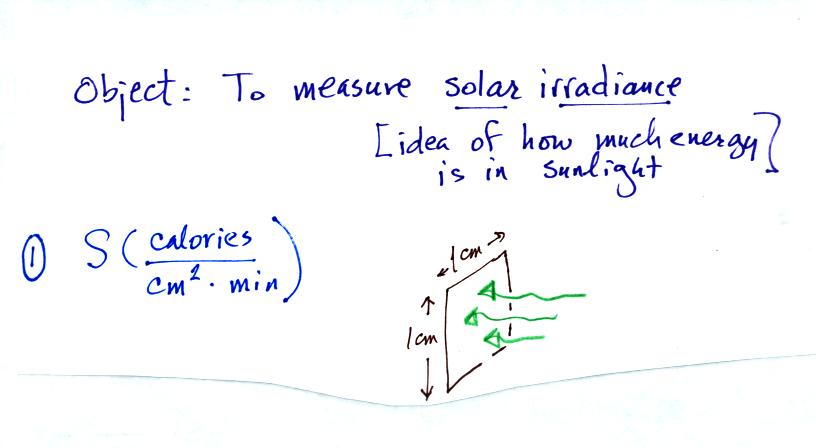
At the top of the atmosphere So is about 2 calories/(cm2
min). At
the ground you would expect to measure about half of this value, S=1
cal/(cm2 min).
How much energy would a collector of area A absorb if left in the sun
for a time Δt?
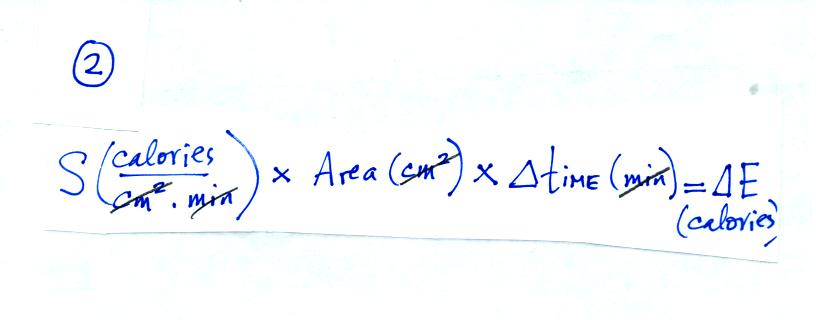
As the collector absorbs energy it will warm up. You
should
remember the formula below from class a week or two ago.

Now we will take ΔE from the first
equation
and substitute it into the second equation. Here's what you get:

Now you solve this equation for the
solar irradiance variable S.

So if you leave a piece of aluminum
(with known mass, area, and
specific heat) out in the sun and measure how quickly it warms up, you
have a way of measuring the solar irradiance, the energy in sunlight.
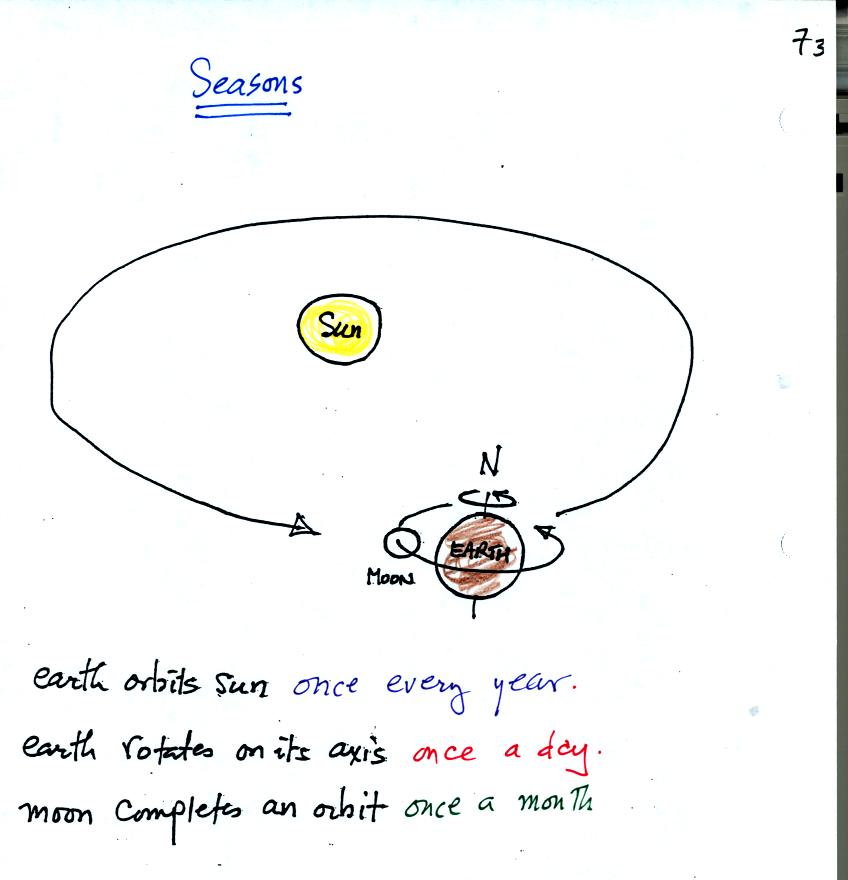
Review of a few basics before covering the causes of seasonal
variations on the earth (p. 73 in the photocopied notes).
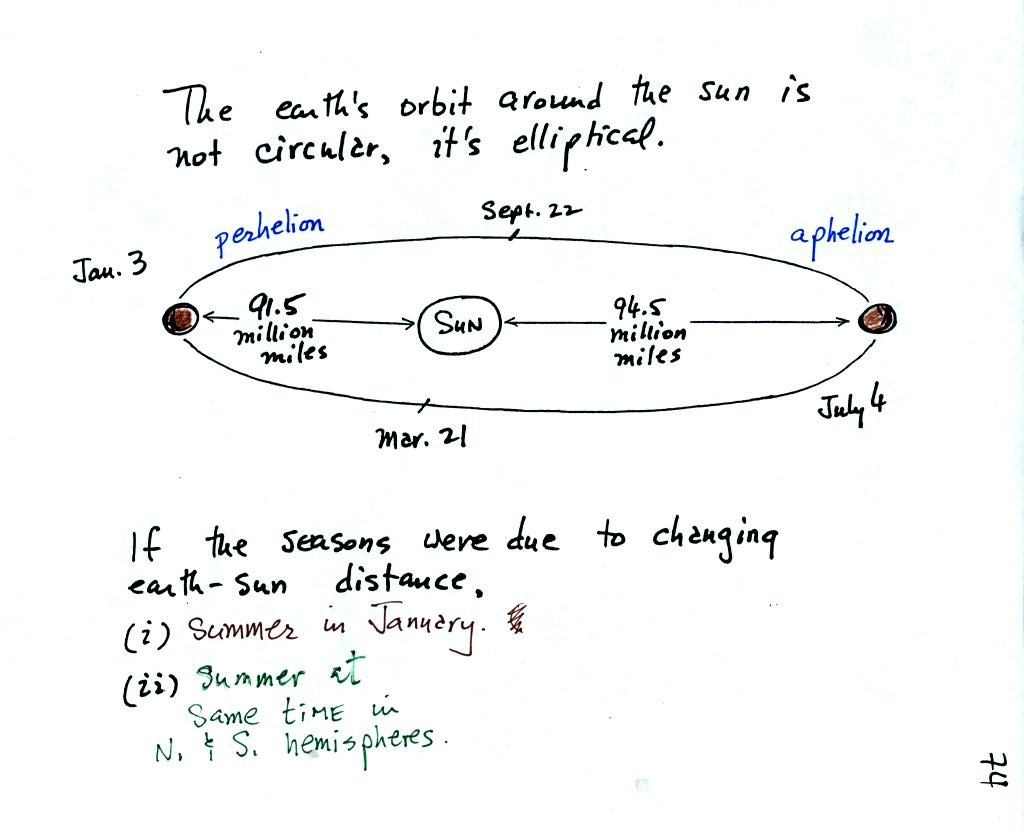
The earth is closer to the sun in January than in
July. If
this were the main cause of the seasons, summer in Tucson would be in
January and winter would be in July. Summer and winter would both
occur at the same times in both hemispheres. This changing
distance
between the earth and the sun has an effect but is not the main cause
of seasonal changes.
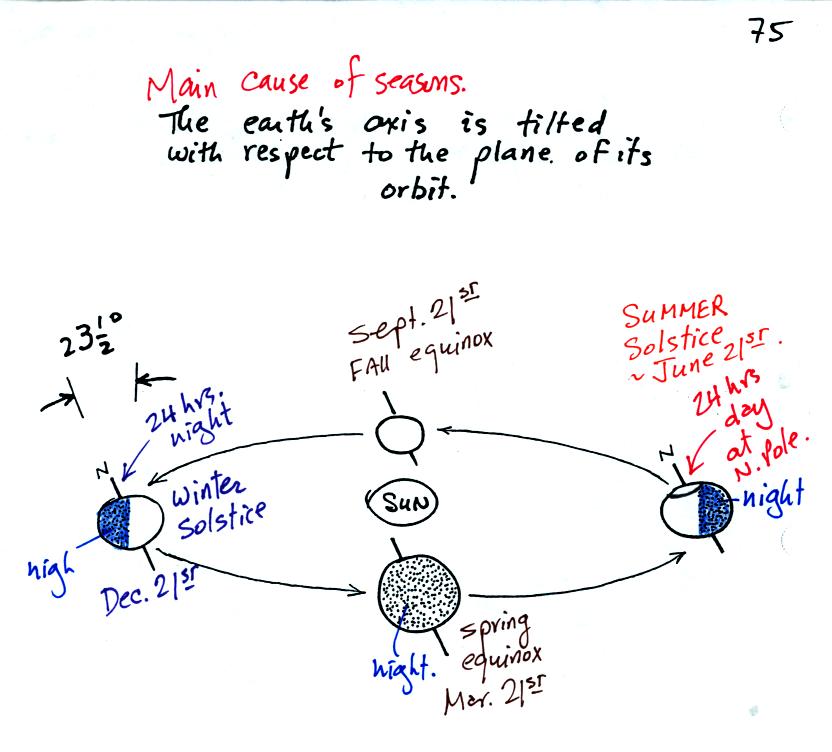
You should be able to start with a blank sheet of paper and
draw a
picture like this. Note how the N. Pole tilts away from the sun
on Dec. 21st, the winter solstice. The N. Pole is tilted toward
the sun on June 21. This changing orientation of the earth
relative to the sun is the main cause of the seaons.
Now imagine travelling over to the far side of this picture, turning
around and looking back toward the earth and sun. This next
picture shows you what you'd see.
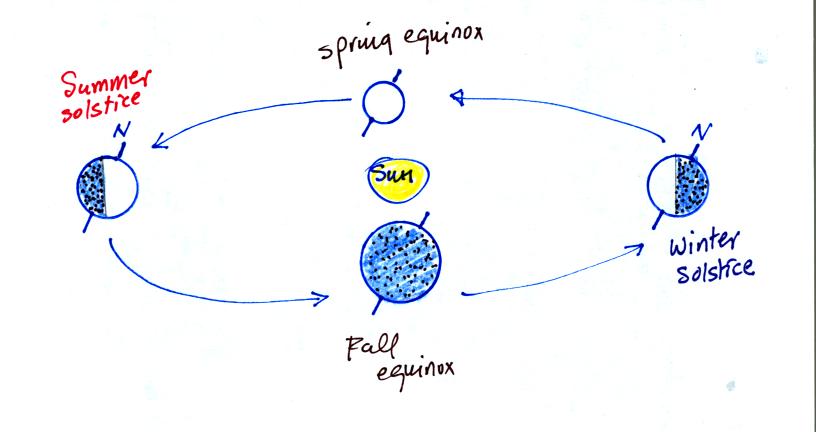
Even though the earth is tilting in a differentt direction
you
shouldn't have any trouble correctly identifying the solstices and
equinoxes in this picture.
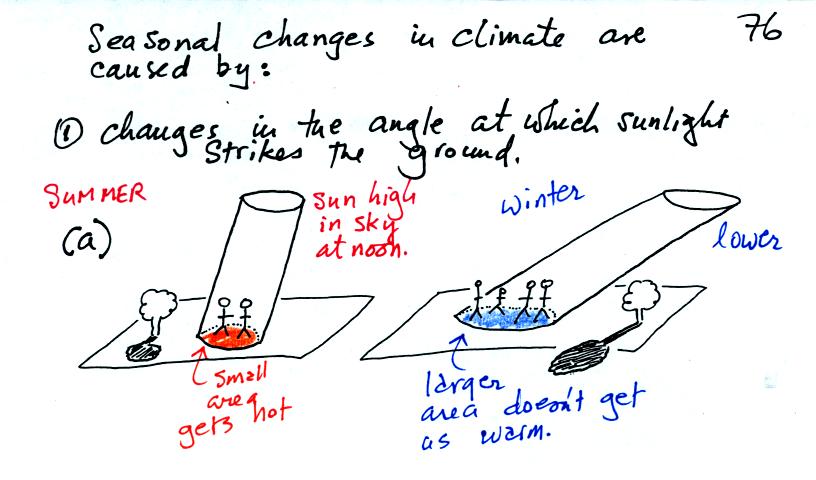
In the summer when the sun reaches a high elevation angle
above the
horizon, an incoming beam of sunlight will shine on a small area of
ground. The ground will get hot. In the winter the sun is
lower in the sky. The same beam of sunlight gets spread out over
a larger area. The result is the the ground won't get as hot.
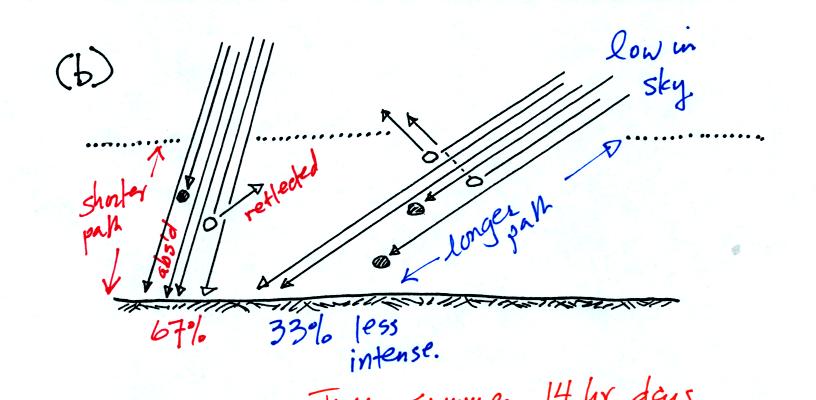
As sunlight passes through the atmosphere it can be absorbed
or
reflected. On average only about 50% of the sunlight arriving at
the top of the atmosphere actually makes it to the ground. A beam
of sunlight that travels through the atmosphere at a low angle (right
picture above) is less intense than beam that passes through the
atmosphere more directly (left picture).

The sun shines for more time in the summer than in the
winter. In
Tucson the days are around 14 hours long near the time of the summer
solstice. In the winter the sun only shines for 10 hours on the
winter solstice. Days are 12 hours long on the equinoxes.
















